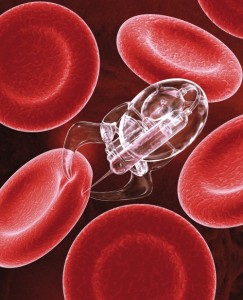As you may already know, nanosciences innovative advances encompass technology, medicine and manufacturing and so affect our world to more and more of an extent. Some in the scientific community are hesitant to endorse the developments and wonder about the consequences of these advances.
However, fascination surrounding this field, and lets not forget excitement over the potential for profit, is at the forefront and pushing nanoscience forward.
Nano-Imaging
When we think of a nanometer, we need to wrap our minds around the fact that this is a measurement of a substance 100,000 times smaller than a single human hair. Before any form of mass production using these substances is in place, researchers need to accurately image them to learn of their topography and composition. Observation of nanomaterials is achieved by impressively powerful microscopes. The atomic force microscope (AFM) provides for extremely high (nanometer) resolution.
Today we hear of many developments and new manners of operation devised for the AFM paving the way for serious strides in nanotechnology. Therefore, with advances in nano-imaging comes progressive research and subsequent manufacturing which has benefits as well as potential risks.
First of all, industry, research bodies and governments are not aware of the amount of nanomaterials being produced. Without knowing these amounts, how is it possible to know the amount of potential exposure and therefore risks?
Does the law protect us now?
Governments do have regulations and guidelines but new materials like these have proven difficult to classify and sometimes are grouped together with already existing materials and so not independently classified at all. Other countries are already climbing aboard the nanotechnology bandwagon in a big way and governments need to properly regulate the importation of products containing these materials. How much to regulate leads to much discussion. The “bottom line” question needs to be answered…. “Is nanotechnology going to do more harm than good?”
All in all, the most basic risk assessments cannot be made because of a lack of information. Without appropriate analysis, we cannot have adequate laws.
What are our concerns?
Communities are becoming more ‘green’ in their approach to environmental issues. Concerns are valid over the potential these substances have to contaminate our water supplies or potentially harm plants and animal populations. After all, environmental sustainability is the only option and so, industry must always remain accountable.
The potential risks to human health and the environment differ greatly from risks associated with conventional materials which exhibit different characteristics.
Scientists are at work to increase their understanding of how nanomaterials interact with biological systems such as cell membranes so as to minimize any adverse effects. However, nanomaterials are still marketed commercially by the ton. They are in our cosmetics, sunscreens and lotions, car wax, paints and clothing. As research progresses and findings can be marketed in products, the list grows. The threat of potential toxicity of nanomaterials entering our tissues and cells exists and there could be real health implications.
Industry cannot allow for health, environmental or ethical concerns to decrease or halt the progress of nanotechnology. There is an agenda here – in the end it is much to do with a fat wallet.
Developments in this field are exciting but at what cost?
The point here is, don’t be afraid to speak up and ask the questions that matter.
For further reading, check out my article on nanotechnology on my site Microscope Master. Links in my bio.
